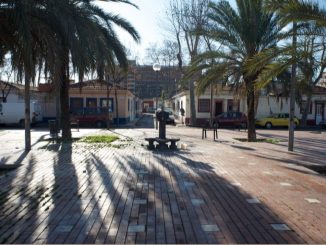
immigration

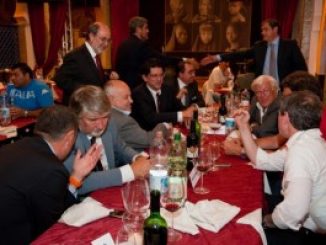
The fall of the Roman Empire
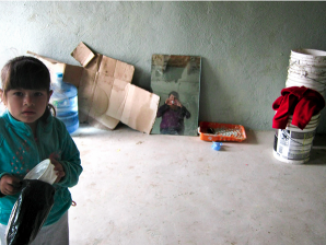
Tijuana’s Flowers of the Rancho

Chinatowns at the center: Gary McDonogh

Recipes for interculturality from Bilbao
 Arroces del Mundo, Munduko Arrozak, is a popular fiesta being held since 2004 in San Francisco neighborhood, Bilbao (Basque country) . This barrio, apart from the center for the estuary and the railway, is four times more populated than the rest of the city; it has always been stigmatized as a ghetto, related with prostitution, considered a marginal part of the city where the immigrant live, and recently is becoming to be partially gentrified. The fiesta is the result of a patient networking that the Coordinadora de Grupos de Bilbao la Vieja, San Fraencisco y Zabala had been doing for years: this organization was born to influence in the Renewal Plan designed by the City Council, and is made of groups and individuals who had already done projects of social communication in the neighborhood. The idea of the fiesta serves both to denounce the abandon of the neighborhood, and to aim at the construction of intercultural relationships through autonomy and self-organization: the organizers of the event stress that as many people are involved, as less conflicts and incidents ocurr - with the practice, this undermines the securitarian discourse used by the authorities to increase police presence in San Francisco neighborhood.
Arroces del Mundo, Munduko Arrozak, is a popular fiesta being held since 2004 in San Francisco neighborhood, Bilbao (Basque country) . This barrio, apart from the center for the estuary and the railway, is four times more populated than the rest of the city; it has always been stigmatized as a ghetto, related with prostitution, considered a marginal part of the city where the immigrant live, and recently is becoming to be partially gentrified. The fiesta is the result of a patient networking that the Coordinadora de Grupos de Bilbao la Vieja, San Fraencisco y Zabala had been doing for years: this organization was born to influence in the Renewal Plan designed by the City Council, and is made of groups and individuals who had already done projects of social communication in the neighborhood. The idea of the fiesta serves both to denounce the abandon of the neighborhood, and to aim at the construction of intercultural relationships through autonomy and self-organization: the organizers of the event stress that as many people are involved, as less conflicts and incidents ocurr - with the practice, this undermines the securitarian discourse used by the authorities to increase police presence in San Francisco neighborhood. 
“Negros” of the periphery of Barcelona: young Dominicans’ stigma and resistance
“…blacks always worked like 'niggers'; blacks are the ones who work hardest, because they want to live like whites do…” Simón, 16 years old, living in L’Hospitalet (BCN) from age 9
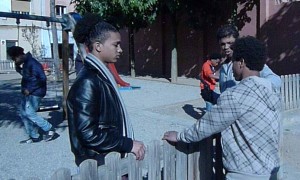 Los Kitasellos is the name of one of the youth groups in the outskirts of Barcelona with which anthropologist Luca Giliberti (University of Lleida – FPU-ME researcher) is doing his fieldwork. Freeing themselves from the mark ("quitarse el sello") of being different, means for many young Dominicans in L'Hospitalet de Llobregat resisting against the stigma with which they are labelled, even by the institutions - in political campaigns, constant police raids, newspapers always in search of Hispanic gangs - and convert this discrimination in an emblem of black identity.
Los Kitasellos is the name of one of the youth groups in the outskirts of Barcelona with which anthropologist Luca Giliberti (University of Lleida – FPU-ME researcher) is doing his fieldwork. Freeing themselves from the mark ("quitarse el sello") of being different, means for many young Dominicans in L'Hospitalet de Llobregat resisting against the stigma with which they are labelled, even by the institutions - in political campaigns, constant police raids, newspapers always in search of Hispanic gangs - and convert this discrimination in an emblem of black identity. 
Racism in “Santako”
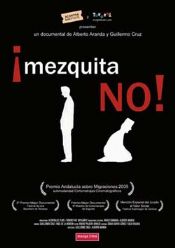 Six cities around Barcelona - Hospitalet, Badalona, Terrassa, Sabadell, Mataró, Santa Coloma de Gramenet - are among the ten most populated in Catalonia. But only Hospitalet and Santa Coloma have a higher density than Barcelona, compact city par excellence. The urbanistic chaos that characterises Santa Coloma de Gramanet is the direct result of real estate speculation and political corruption: persistent racism among some sectors of its population is the other side of overcrowding and impressive diversity of origins that defines the people of Santako. But if in the beginning of the 20th century, those who rejected the immigrants from southern Spain settled in the casas baratas at least could hold to their local origins and catalan speech, in the 21th century those who promote boycott to arabics, chinese, latinamericans, romans of the city, are themselves - for the most part - second generation immigrants. The video Mézquita no! (2005) describes the conflict around the opening of a mosque in the Singuerlin neighborhood.
Six cities around Barcelona - Hospitalet, Badalona, Terrassa, Sabadell, Mataró, Santa Coloma de Gramenet - are among the ten most populated in Catalonia. But only Hospitalet and Santa Coloma have a higher density than Barcelona, compact city par excellence. The urbanistic chaos that characterises Santa Coloma de Gramanet is the direct result of real estate speculation and political corruption: persistent racism among some sectors of its population is the other side of overcrowding and impressive diversity of origins that defines the people of Santako. But if in the beginning of the 20th century, those who rejected the immigrants from southern Spain settled in the casas baratas at least could hold to their local origins and catalan speech, in the 21th century those who promote boycott to arabics, chinese, latinamericans, romans of the city, are themselves - for the most part - second generation immigrants. The video Mézquita no! (2005) describes the conflict around the opening of a mosque in the Singuerlin neighborhood. 
Larache in the summer time
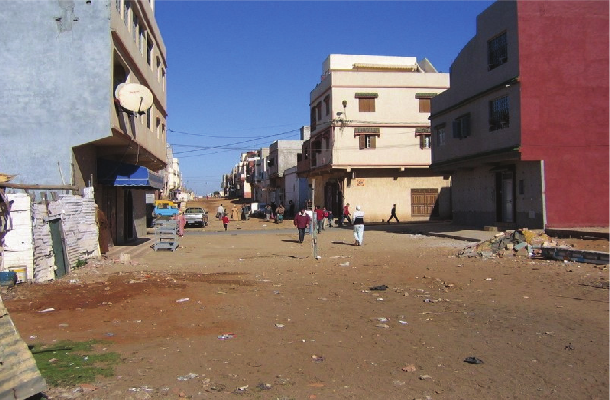
On summer nights, in the center of Larache (a port on the Atlantic, 80km south of Tanger) stroll all moroccans that came back from Europe on vacations. New cars, european clothes, overconfident attitudes: almost every family of the city has some relative in Spain, England, Belgium, France, Netherlands. In Larache, fish abounds, vegetables are cheap, and housing is affordable. It was here that the first experience of public housing in Morocco took place in the 20s: the neighborhood of Kalleto (Hay Jadid, New neighborhood), built for slum dwellers and migrants from aroubía, rural areas. For its inhabitants, each fight, every bad night, is felt as a shame, for it reminds them they are not in Europe, where everything is perfect: as the shikis (stuck up) of the center seem to assert, parading their pretended wealth.

Foreigner Rome (the uses of diversity)
 [/caption]
Zoning means that some parts of the city, for real estate or urbanistic reasons, are devoted to certain groups of population: if there are neighborhoods where immigrants live, it's obvious that the schools of these neighborhoods have to cope with much more children born from foreigners. Such is the situation in Torpignattara, in the east periphery of Rome: a primary school is undergoing a series of public debates abounding in words like "ghetto", "emergency", "alarm", "banlieue". While right and left-wing politicians declare themselves worried for the school's "italianity", its teachers are carrying out their work worthy of the best italian pedogogical tradition, using diversity as a resort to supply to the massive cuts and decadence of public education. Until when they will call them "foreigners"? Rome is changing, and while some use this transformation to boost war among the poor, others understood its potential to come through the cultural and political stagnation of the so-called "Italian society".
[/caption]
Zoning means that some parts of the city, for real estate or urbanistic reasons, are devoted to certain groups of population: if there are neighborhoods where immigrants live, it's obvious that the schools of these neighborhoods have to cope with much more children born from foreigners. Such is the situation in Torpignattara, in the east periphery of Rome: a primary school is undergoing a series of public debates abounding in words like "ghetto", "emergency", "alarm", "banlieue". While right and left-wing politicians declare themselves worried for the school's "italianity", its teachers are carrying out their work worthy of the best italian pedogogical tradition, using diversity as a resort to supply to the massive cuts and decadence of public education. Until when they will call them "foreigners"? Rome is changing, and while some use this transformation to boost war among the poor, others understood its potential to come through the cultural and political stagnation of the so-called "Italian society". 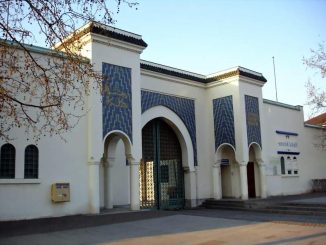
We are not alone in the world: teachings from Paris’ “93”

Recipes to eliminate poverty in Buenos Aires
 On december 8th, 2010, the Metropolitan and Federal Police attacked the 200 families who had settled in Parque Iberoamericano (Buenos Aires), as if it was an enemy army: the operation ended with two deaths and many injured. Then, the local gobernment and mass media promoted xenophobia, presenting the abandoned park as "squatted" by bolivians and paraguayans linked with drug dealing: so racist groups from the neighborhoods, together with violent hooligans - patotas de barrabravas , close and often directly hired by the local government- continued the job, killing two more of the settlers.
On december 8th, 2010, the Metropolitan and Federal Police attacked the 200 families who had settled in Parque Iberoamericano (Buenos Aires), as if it was an enemy army: the operation ended with two deaths and many injured. Then, the local gobernment and mass media promoted xenophobia, presenting the abandoned park as "squatted" by bolivians and paraguayans linked with drug dealing: so racist groups from the neighborhoods, together with violent hooligans - patotas de barrabravas , close and often directly hired by the local government- continued the job, killing two more of the settlers. 
Ethnicity and gender in a murder in the periphery of Rome
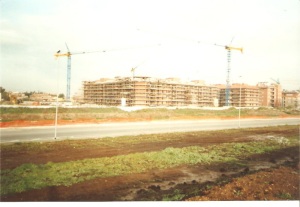
On october 15th, 2010, the 32-years-old romanian nurse Maricica Haiaianu, died after being hit by an italian young man in the Anagnina metro station in Rome. About this fact (racism? sexism? the two of them? or a complex system of symbolic interactions?), and about the context that produced it, writes the italian anthropologist Pietro Vereni. This is the translation of his article into spanish; you can read the original version in italian in his blog.
Lo siento, pero la cuestión es justamente étnica y de género. El asesinato por parte de Alessio Bertone de la enfermera Maricica Hahaianu en la estación de metro Anagnina de Roma, ha recibido mucha atención por parte de los periódicos, de la radio, de la televisión y de todos los medios de comunicación. La historia es esencialmente dramática en su banalidad (una nueva versión de la banalidad del mal, podríamos decir) y parecería una de esas trágicas “fatalidades” debida a la anomía de la vida urbana, a un sistema de relaciones sociales totalmente vacío de contactos personales y por lo tanto reducido a puro intercambio económico. Aunque no podamos pasar por encima de estos aspectos, y no hay duda que la vida en las metrópolis se caracteriza por un aumento de violencia aparentemente gratuita, pero creo que en este caso específico tenemos que investigar también su componente “étnica”, que no es absolutamente marginal como parecen suponer muchos periodistas y políticos: que han hablado de un caso de violencia que no hay que explicar absolutamente en términos de racismo o de tensión étnica.
The horizontal city: the neighborhoods of Cases Barates in Barcelona

Our research group began working in 2008 on the Casas Baratas de Bon Pastor, in the north periphery of Barcelona. It's a special neighborhood: more than 600 one-story houses, every one of them painted in a different color, in the middle of factories and industrial zones, on the shore of the Besós river. Built in 1929 in the middle of nowhere, to give housing to the immigrant factory workers (“murcianos y de la FAI”, they called it in those times), now it's an urban space more similar to a village than to a neighborhood of an occidental metropolis. A project of the Barcelona City Council, owner of all the houses, entails the “remodelation” of the whole area, through the demolition of the "casas baratas": the first 145 where demolished in 2007, a few months before we began our research. The inhabitants of the neighborhoods are suffering a series of “social pathologies” that go along the physical demolition of the houses: the social networks (neighbors, relatives...) are suffering the consequences of the urban transformation, and the "humanscape" of the neighborhood is changing maybe even faster than the physical landscape.
- READ THE REPORTS OF THE RESEARCH “Represalies i resistencies a les cases barates de Bon Pastor” i “Lluita social i memoria col.lectiva a les cases barates de Barcelona” (primer informe – segon informe)
- There is a webpage that we are using to work, but in which we are uploading the material we are producing: http://laciutathoritzontal.org